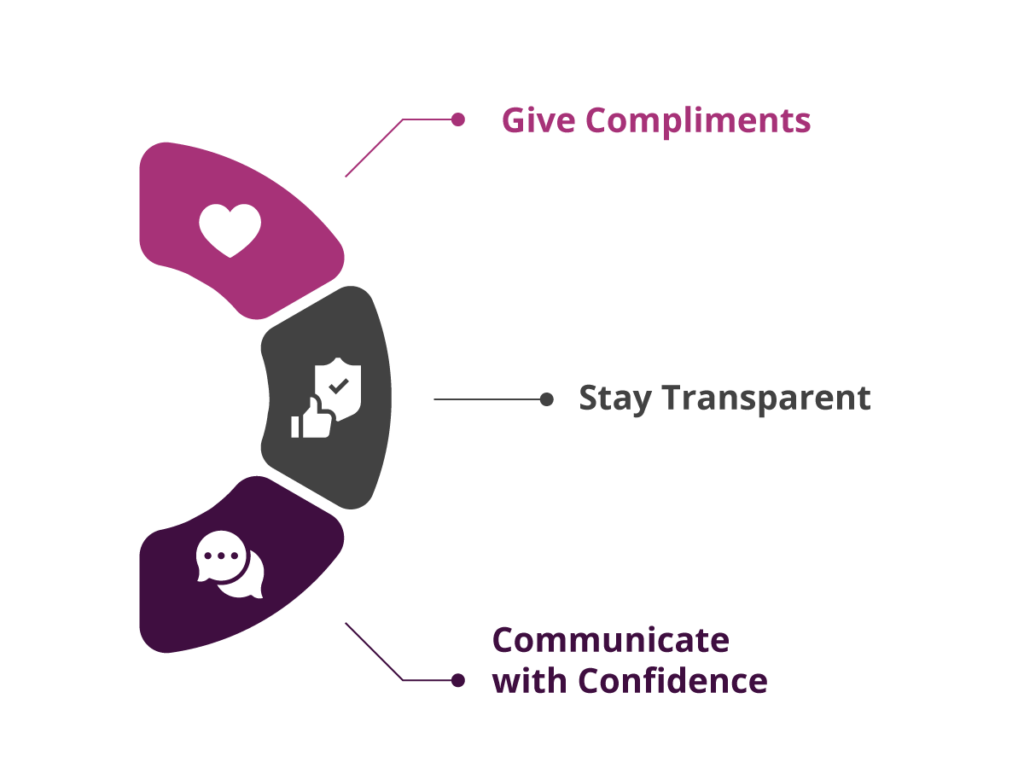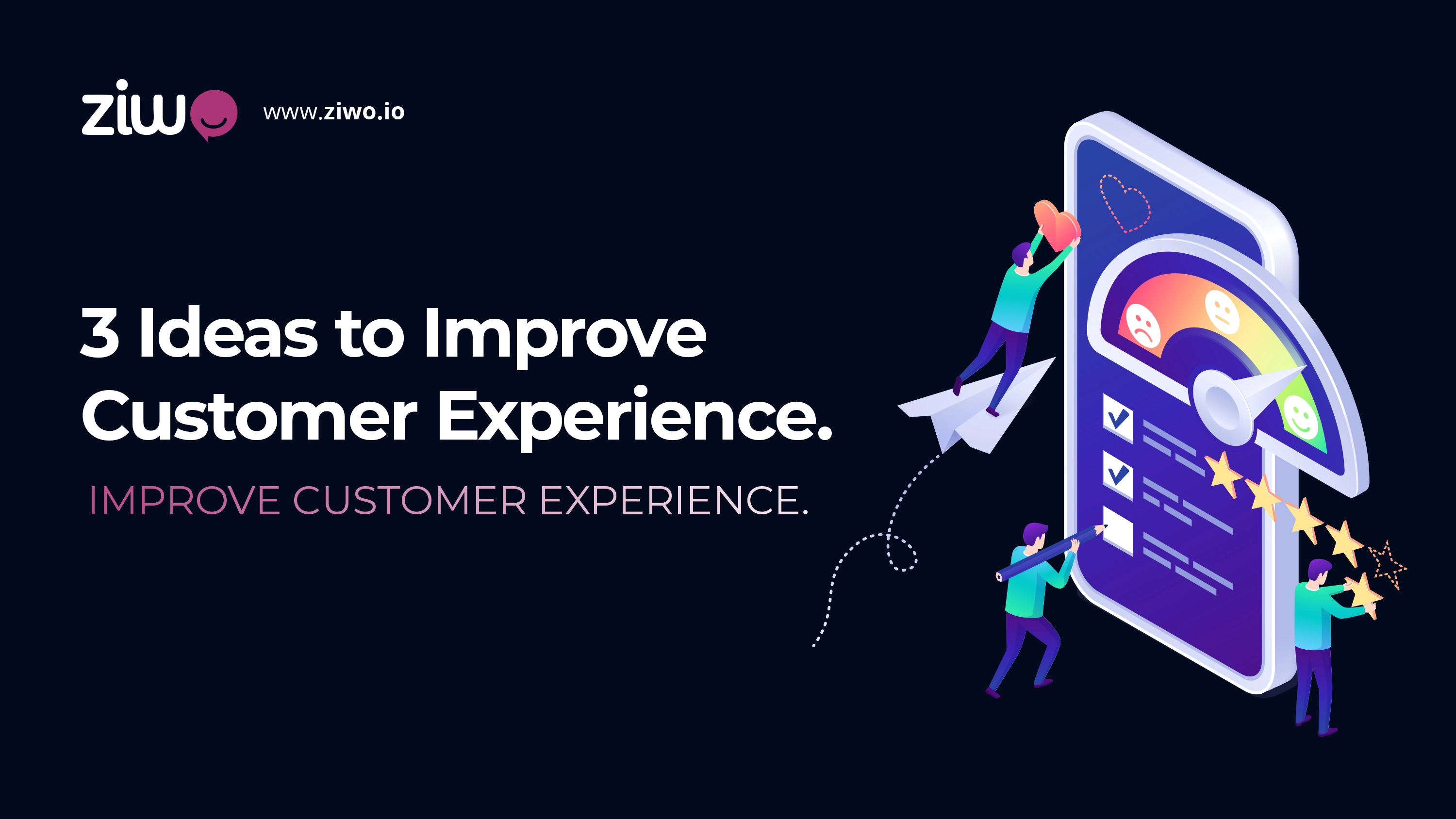 Il est facile et agréable de travailler avec des clients réguliers. Ils connaissent déjà l'entreprise et ont une bonne compréhension de vos produits et services. En outre, ils sont prêts à pardonner aux agents leurs petites erreurs et vous traitent généralement de manière amicale.
Il est facile et agréable de travailler avec des clients réguliers. Ils connaissent déjà l'entreprise et ont une bonne compréhension de vos produits et services. En outre, ils sont prêts à pardonner aux agents leurs petites erreurs et vous traitent généralement de manière amicale.
Il en va tout autrement des personnes qui vous contactent pour la première fois. Toute erreur ou même un petit malentendu peut amener le client à quitter votre entreprise. Il est donc très important d'accorder une attention particulière au premier contact. Souvent, c'est lui qui déterminera le caractère fructueux et rentable de la suite de votre collaboration. Dans cet article, nous vous expliquons comment mener correctement cette conversation.
Où commence le premier contact avec un client ?
Comme nous l'avons vu plus haut, lors du premier appel, le client ne sait souvent rien de votre entreprise. Il connaît peut-être le nom, quelques informations générales et une courte liste de produits et de services. Mais il ne sait rien de la manière dont vous travaillez, du niveau de votre service. Et cela commence avant même la réponse immédiate de l'agent. Vous pouvez vous montrer sous votre meilleur jour, par exemple avec un IVR (menu vocal interactif) compétent. Nommez votre entreprise, laissez le client choisir l'objet de sa demande et dirigez-le immédiatement vers l'employé approprié, qui parle si possible la même langue.
Dès ce stade, il comprendra que vous essayez de l'aider à résoudre son problème et que vous ne le laissez pas seul. C'est alors que la conversation proprement dite commence. Et voici ce qu'il faut en faire.
Nous avons abordé dans un article précédent quelques conseils sur la manière de devenir une entreprise centrée sur le client; comme il s'agit d'un sujet connexe, il sera vraiment utile d'y jeter un coup d'œil pour obtenir davantage d'améliorations.
Comment avoir une première conversation ?
Il convient de noter immédiatement que le premier contact (et son approche) sera différent de tous les appels suivants de ce client. Vous devez donc vous préparer en conséquence. En général, tous les messages WhatsApp entrants de nouveaux clients peuvent être divisés en deux grandes catégories, qui dépendent principalement de votre activité. Un appel entrant peut provenir d'un client privé, dans un modèle B2C, et de représentants d'une entreprise, dans un modèle B2B.
Les recommandations pour les deux cas seront à peu près les mêmes, à l'exception d'un détail important : lorsque vous parlez à une entreprise, n'hésitez pas à utiliser Google. Oui, au cours d'une conversation, ouvrez votre navigateur et lancez une recherche sur le nom de l'entreprise dont l'employé vous appelle. Vous pourrez ainsi obtenir des informations initiales sur l'entreprise qui souhaite travailler avec vous et faire bonne impression grâce à vos connaissances.
Comment entamer le premier contact avec un client :
Première étape
La première chose à faire est donc d'écouter la conversation. C'est particulièrement important si vous faites un appel sortant. Soyez amical, ouvert et patient. N'oubliez pas que des choses qui vous paraissent évidentes peuvent être complètement incohérentes pour une autre personne et préparez-vous à devoir répéter de nombreuses choses. Nous avons décrit en détail les conseils d'étiquette téléphonique pour les agentsdans l'un de nos articles.
Une autre règle importante, qui peut sembler triviale, consiste à saluer le client et à se présenter dès le début du dialogue. En outre, vous devez dire à la fois le nom de l'entreprise et votre nom et votre titre.
Le premier est nécessaire pour qu'une personne comprenne immédiatement qu'elle a appelé à la bonne adresse, et le second est important pour établir un contact émotionnel entre la marque et le client. Il est en effet plus agréable de communiquer avec une personne qu'avec un représentant anonyme d'une entreprise.
En outre, n'oubliez pas de demander le nom de l'appelant. Il est important de se rappeler comment la personne s'est présentée : si elle s'est présentée par son prénom et son nom de famille, il faut l'appeler par ces noms tout au long de la conversation. Si le client ne vous a donné que son prénom, nous vous recommandons de l'utiliser tout au long de l'appel.
Deuxième étape
Une fois l'introduction terminée, vous pouvez passer en douceur au cœur de la conversation. Poser la bonne question vous permettra d'en savoir plus, et essayez d'avoir l'air amical et attentionné. Il est important d'éviter les formalités telles que "Comment puis-je vous aider?" et les questions fermées auxquelles le client peut répondre en un ou deux mots. L'idéal est de rédiger à l'avance toutes les questions possibles dans des scénarios et de les utiliser en fonction de la situation.
Tenez également compte de la question "Comment avez-vous entendu parler de nous ?" - il ne sera pas possible d'y répondre en quelques mots, et la personne commencera à parler, et c'est là votre tâche principale.
Troisième étape
Après avoir établi le contact et clarifié l'objet de l'appel, il est temps de passer à l'étape suivante : vous devez faire en sorte que le client s'intéresse à votre offre. Pour ce faire, même au stade de la préparation, vous devez répondre à la question suivante : "Pourquoi le client devrait-il nous choisir ?
"Pourquoi le client devrait-il nous choisir, ou choisir notre service ? Quels sont les avantages qui nous distinguent de nos concurrents ?"
Notez tous les avantages dans une liste séparée et utilisez les arguments de cette liste au moment opportun au cours de la conversation.
Lors de la planification, essayez de ne pas partir de votre produit, mais des "problèmes" théoriques et des douleurs des clients et de la manière dont votre offre peut les résoudre.
Quatrième étape
Après avoir présenté le produit ou le service et suscité l'intérêt, deux résultats sont possibles. Soit vous concluez une affaire et votre entreprise a un nouveau client fidèle, soit il a des objections sur le chemin de l'achat et vous devez y remédier. Téléchargez ce livre blanc sur la gestion des objections de vente.
Comment bien faire ?
Tout d'abord, il est nécessaire d'identifier la véritable cause de l'objection. Souvent, derrière la première objection se cache une raison qui n'est pas toujours mentionnée. Sur cette base, écoutez attentivement le client.
Ensuite, il faut choisir des arguments suffisamment convaincants et ne pas argumenter avec l'interlocuteur. Même si son problème vous semble insoutenable et sans gravité. Pour lui, il s'agit d'un obstacle sérieux à l'achat, ce qui signifie que vous devez le traiter en conséquence.
Enfin, voici quelques conseils très utiles à utiliser lors du premier contact :
 Faire des compliments
Faire des compliments
Vous ne devez pas vous dévaloriser ou flatter le client, mais des phrases comme "vous avez bon goût" et "je vois que vous comprenez le sujet" vous aideront à gagner la confiance de la personne et à rendre les choses plus faciles avec elle.
Restez transparent
La transparence est le fondement d'une relation ouverte, honnête et durable avec tout client. Dans ce cas, vous devez dire aux clients ce qu'ils ont besoin de savoir. Par exemple, vous pouvez annoncer sans détour les mises à jour de votre politique ou les changements de prix, ou même informer un client de vos erreurs dès que possible. Lorsque vous parlez d'erreurs qui se produisent, vous devez vous rappeler d'expliquer comment vous allez les résoudre et fournir un calendrier précis.
Communiquer avec confiance
Ce n'est pas le conseil le plus simple, contrairement à ce que l'on pourrait croire à première vue. Surtout si les propriétaires de grandes entreprises font appel à des agents. Montrez que vous êtes des partenaires égaux et que vous concluez un accord qui profitera également aux deux parties.





